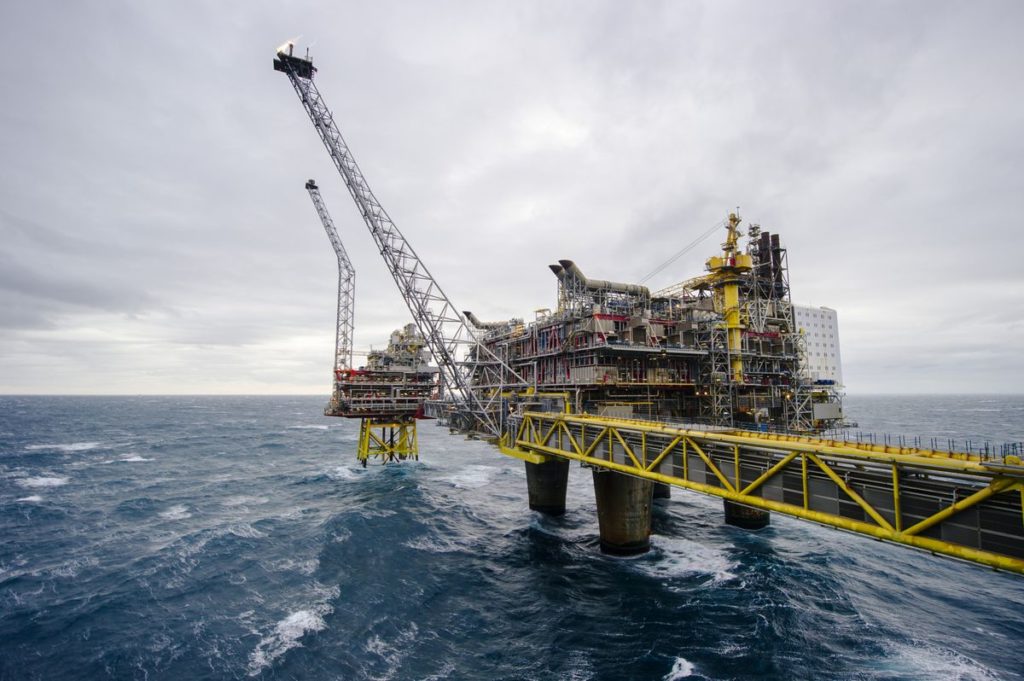
The Norwegian energy ministry has granted Equinor permissions for an additional 2.4 billion cubic metres of production from key gas fields, as it looks to maintain higher exports to Europe through the summer.
Increased production permits offered by Norway’s Ministry of Petroleum and Energy will increase the ceiling for gas production at Equinor’s Troll, Oseberg and Heidrun fields over the coming year.
In total they would enable up to 2.4 billion cubic metres (bcm) of additional flexible production from the fields. Some turnaround activity will also be postponed until later in the year.
Equinor said a more flexible production permit for the Oseberg field for the current gas year would enable gas exports up to 30 September 2022 to rise by about 1bcm. This equates to a 15-20% increase for the current year, putting expected production at about 7bcm.
Planned turnarounds on four platforms at Oseberg in May will be postponed to September 2022, the state-backed energy giant said, accelerating the production of just under 0.5bcm from September to May.
It said this was based on “a thorough evaluation of the plants’ technical integrity,” and that should any necessary maintenance still arise, it would be done during short turnarounds.
The postponement will also result in a corresponding postponement of the Sture terminal turnaround, it added.
Production at the Troll field will be permitted to rise to 38 bcm for the current gas year, another 1bcm increase, or about 3% of annual production. However, Equinor said this would be “in the event of loss of production from other fields.”
Finally, another application allows the operator to increase production on the Heidrun field by 0.4bcm, an increase of up to 30%.
The permit adjustments increase the robustness of the production on fields exporting via the Kollsnes processing plant, Equinor said, given Troll’s ability to supply an additional, flexible 1bcm.
“Our focus is to maintain safe and efficient operations on our facilities, remaining a reliable supplier of energy to the markets in Europe in a highly challenging situation. In close dialogue with the authorities and our partners we are now taking steps to maintain the high production level from the winter,” said Kjetil Hove, executive vice president for exploration and production Norway.
European demand
It comes as Europe attempts to reduce its demand for Russian gas by two-thirds before the end of 2022 and eliminate its dependence entirely before 2030.
The European Commission set out its REPowerEU plan last week, which would remove at least 155 billion cubic metres of gas, equivalent to the amount imported by the EU from Russia in 2021.
The proposals would also require gas storage to be filled to at least 90% by October 1, this year, from around just under 30% at present.
In 2021 Norway exported 113.2bcm of gas to Europe through Gassco-operated systems, meeting almost 25% of gas demand in the EU and the UK.
Equinor also pointed to Hammerfest LNG, scheduled to come on stream from mid-May, which will provide more than 6bcm of gas per year from the Barents Sea by tanker.
“In this highly challenging situation we do our utmost to deliver as much as possible to our customers, enabling them provide homes and companies with gas. We are pleased that we, together with the authorities, our partners and Gassco, now ensure that we can export more gas this summer, while increasing the robustness of gas exports,” commented marketing, midstream and processing executive vice president Irene Rummelhoff.
Recommended for you
